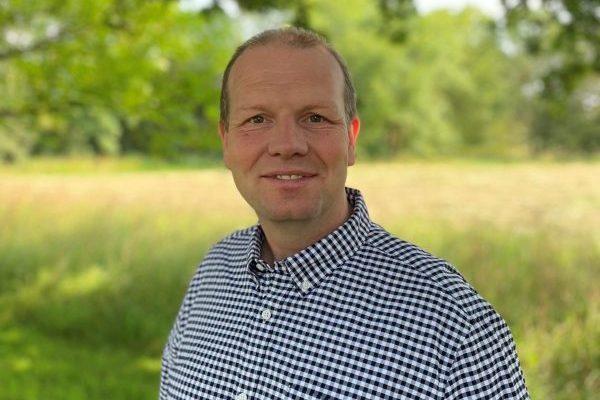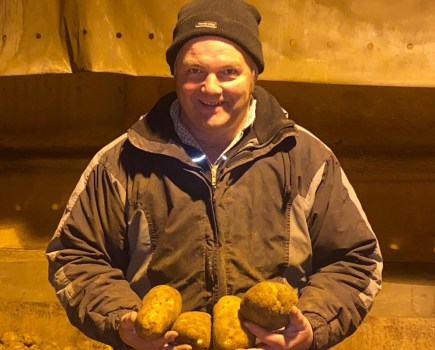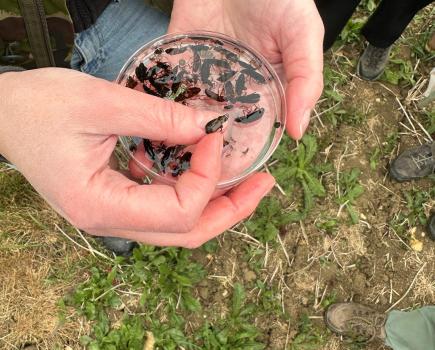By Martin Lines
It’s that time of year when farming businesses are committing new investments and hope into next year’s harvest. Rotational plans have been made, inputs been bought and crops have been planted in the hope of a good yield in 2025.
While individual crops will hopefully give a good annual return on investment, other things we’re doing offer long-term benefits – using a diverse rotation, improving soil health year-on-year, and investing in machinery and technology that can reduce our costs over time. We farmers are always thinking and planning ahead, whether for the weather next season or the health of the farm in 20 years.
Often, the benefits of these longer-term investments aren’t seen by the generation making them which can make it tricky to prioritise them. This is especially true for hedges, trees and infrastructure, where the advantages are few at first but consistently increase over time as the beneficial insects return and growing foliage cover provides essential windbreaks.
Even in years where little or no profit is available – perhaps due to extreme weather causing damage to yields – investments are still required. This is why careful planning and nurturing nature’s free support systems are so crucial to our businesses’ future resilience.
It shouldn’t just be us farmers making long-term investments for a productive and stable future. To create the impactful change we require, all actors in the system must move together. Supply chains should address their vulnerability to factors outside their control such as climate events, and on fairness to the producers of the goods they rely upon. Our government must also invest public money to help us to bolster the resilience of our damaged ecosystems, changing weather patterns, and long-term nutrition supply.
Our new government has been making it very clear that they feel they have little funds available for agriculture and tough decisions will have to be made on where spending is prioritised. We’ll have to wait until the end of October to see which rumours are true and how they’ve allocated the budget.
Having been to four party conferences this year and spoken to new MPs in all parties, it’s clear many have little understanding of farming, our long-term nutritional security risk and the impacts that are already being felt from climate change and the loss of nature. They don’t understand the direct effects these have on farmers’ financial viability to manage a landscape and produce the services and food we require.
While some MPs may have heard the simple messages being promoted around ‘No Farmers, No Food’ and the concerns regarding food security, they have little understanding of what that means regarding actual action. Catchy headlines and slogans get short-term attention in the news and on social media, but don’t deliver long-term solutions and the investment needed.
Encouraging politicians to think ahead for future generations and not just the next election can be difficult; the investment government has made into agriculture hasn’t increased for years. Therefore with inflation, returns have steadily declined. While £3Bn sounds like a lot of money to spend on farming in the UK, if you look at the money being spent in other areas of government, that £3Bn is stretched very thinly indeed.
There’s much evidence to show that the budget has to at least double to achieve the outcomes of the government’s legally binding targets.
We’ll have to wait and see if the government rows back on its commitments in the years ahead. If we as farmers, fail to deliver as an industry, it’ll be because the investment hasn’t been made. I’m hopeful that core budgets will be maintained, especially those contributing to the outcomes government is focusing on.
For some of us, we may have to refocus on what’s being asked of us by the public and new government and the range of products they want from the landscape – be that human food crops, animal feed, fibre, energy and more – to stabilise our own futures.
The government often says, ‘food security is national security.’ But to achieve that security, investment is required now and in the long term. Crop production will always be vital, but the blend and the value put on other outcomes from our landscape that society wants to invest in, will become increasingly important and it’s up to us to be ready.
This article was taken from the latest issue of CPM. For more articles like this, subscribe here.
Sign up for Crop Production Magazine’s FREE e-newsletter here.




